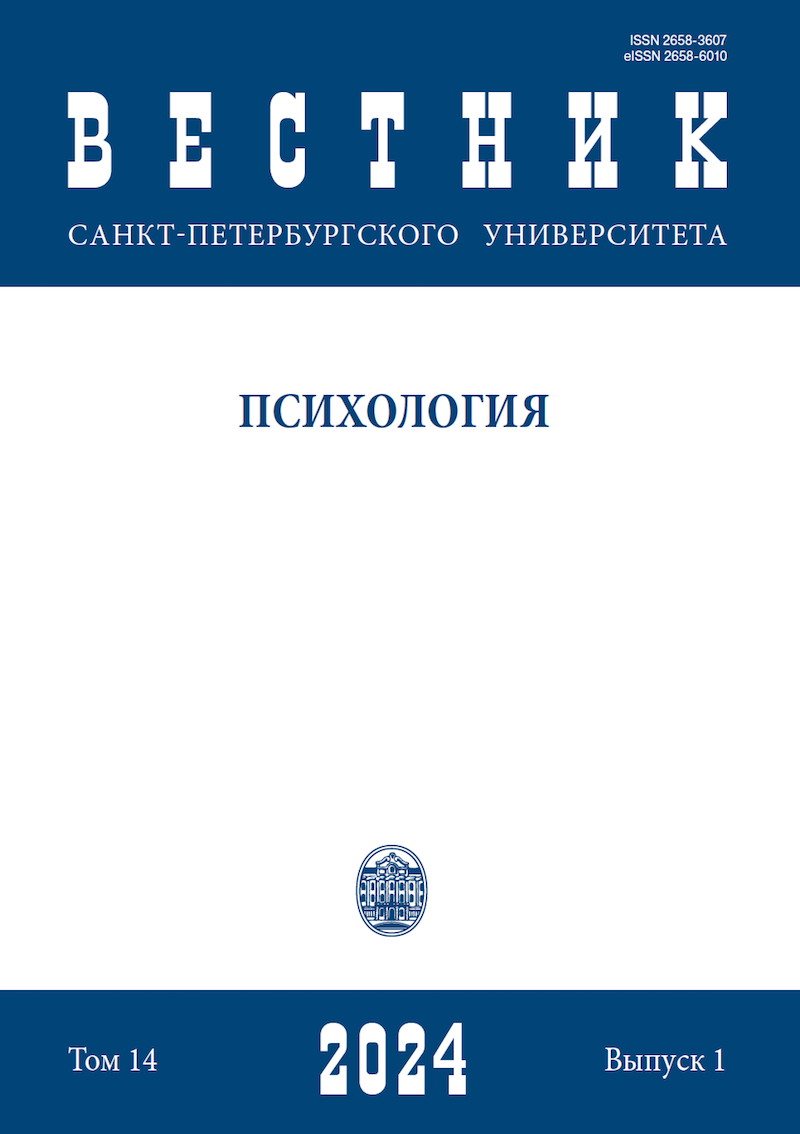Personal and social factors of stress perception by senior adolescent boys and girls
DOI:
https://doi.org/10.21638/spbu16.2024.104Abstract
At present, due to the speed and intensity of modern life and the high stressfulness of events and situations, scientific interest in the study of stress and factors that allow to constructively overcome them has seriously increased. Purpose: to study the contribution of personal and social characteristics to the perception of stress in senior adolescence. Hypothesis: boys and girls manifest the parameters of stress perception differently: overstrain as an emotional component and hardiness to stress as an instrumental component. For girls, the perceived stress is more closely related to their personal characteristics, and for boys it’s associated with social ones. In general, in the period from 15 to 17 years, personal characteristics contribute more to the ability to reduce or increase intensity of stress, and social characteristics contribute to the activation of efforts to counteract stress. A sample of 90 senior adolescents aged 15–17 was divided into two groups: 45 boys and 45 girls. Methods: the scale of perceived stress (ShVS-10, adaptation by Ababkov et al.); the scale of personal anxiety A.M.Prikhozhan; S.Muddy’s hardiness questionnaire (Leont’ev, Rasskazova’s adaptation); K.Riff ’s psychological well-being scales (Troshikhina, adaptation by Zhukovskaya); G. Sommer and T.Fydrich’s perceived social support questionnaire (adaptation by Kholmogorova, Petrova). Correlation and regression analysis was carried out. The study showed gender characteristics and differences in the perception of stress, which are manifested in a subjectively more intense and active experience of stress by girls compared to their peers boys. Data have been obtained on the greater contribution of individual-personal characteristics to the perception of stress in general and to such a component as overstrain in particular. It is also shown that in counteracting stress, along with personal characteristics, the factor of social support also plays a significant role.
Keywords:
older adolescents, perceived stress, anxiety, hardiness, psychological well-being, social support
Downloads
References
References
Downloads
Published
How to Cite
Issue
Section
License
Articles of "Vestnik of Saint Petersburg University. Psychology" are open access distributed under the terms of the License Agreement with Saint Petersburg State University, which permits to the authors unrestricted distribution and self-archiving free of charge.




